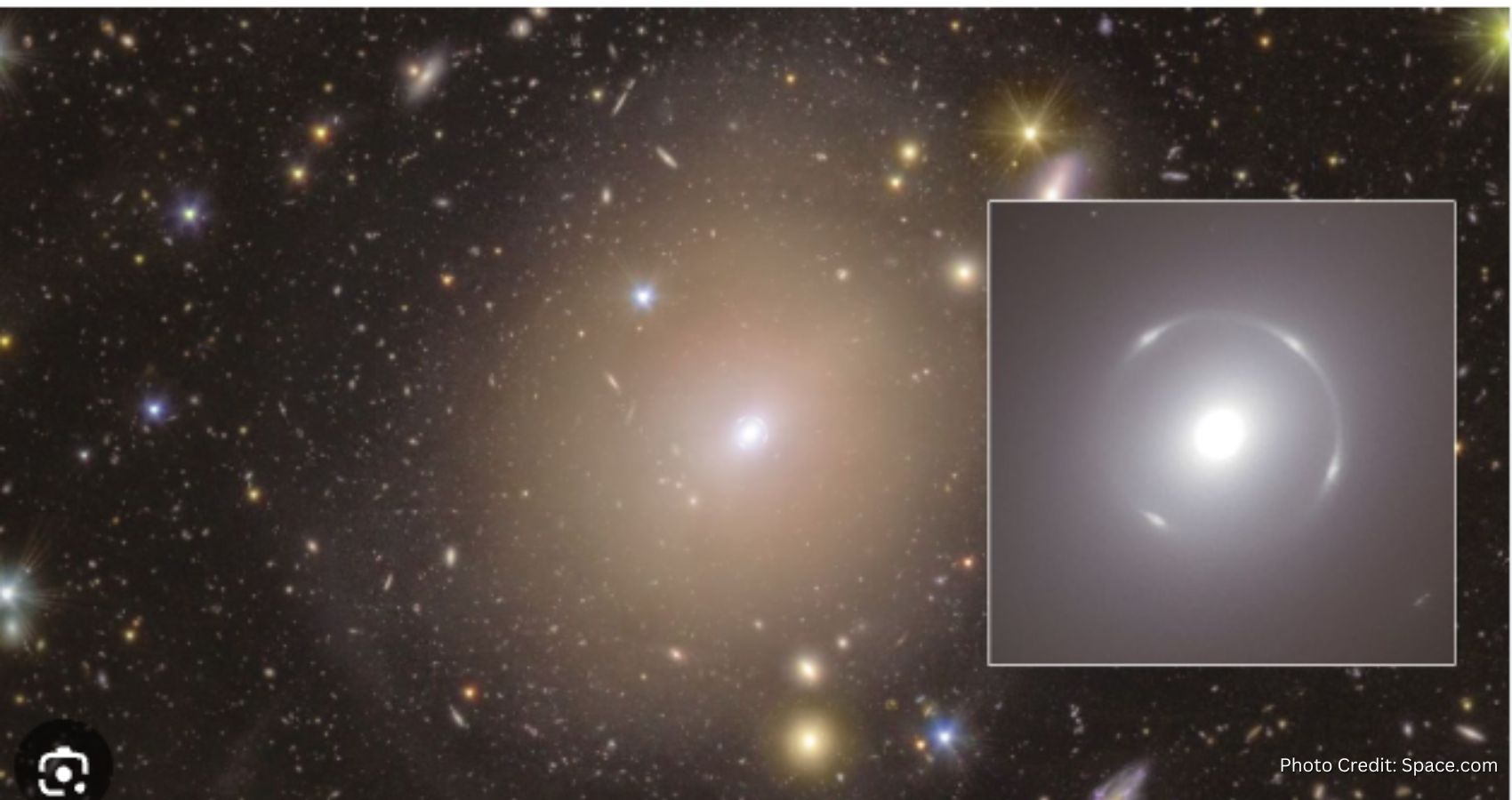The European Space Agency’s Euclid space telescope has identified a rare luminous halo encircling a neighboring galaxy, astronomers announced on Monday.
This glowing formation, known as an Einstein ring, surrounds a galaxy located 590 million light-years away—relatively close by cosmic standards. To put this into perspective, a light-year equals 5.8 trillion miles.
Despite being aware of this galaxy for over a century, astronomers were astonished when Euclid’s observations unveiled the brilliant circular structure. The discovery was detailed in the journal Astronomy and Astrophysics.
An Einstein ring results from the bending of light emitted by a much more distant galaxy, which in this case has formed a near-perfect circle around a foreground galaxy in the Draco constellation. The distant galaxy responsible for producing the ring lies over 4 billion light-years away.
This phenomenon occurs due to gravitational lensing, where the gravitational field of the foreground galaxy distorts the light from the background galaxy. The effect is named after Albert Einstein, whose theory of general relativity predicted this bending of light.
“All strong lenses are special, because they’re so rare, and they’re incredibly useful scientifically. This one is particularly special, because it’s so close to Earth and the alignment makes it very beautiful,” remarked Conor O’Riordan, the study’s lead author from Germany’s Max Planck Institute for Astrophysics.
Euclid was launched from Florida in 2023, with NASA contributing to its mission, which aims to investigate the presence of dark energy and dark matter across the universe.

